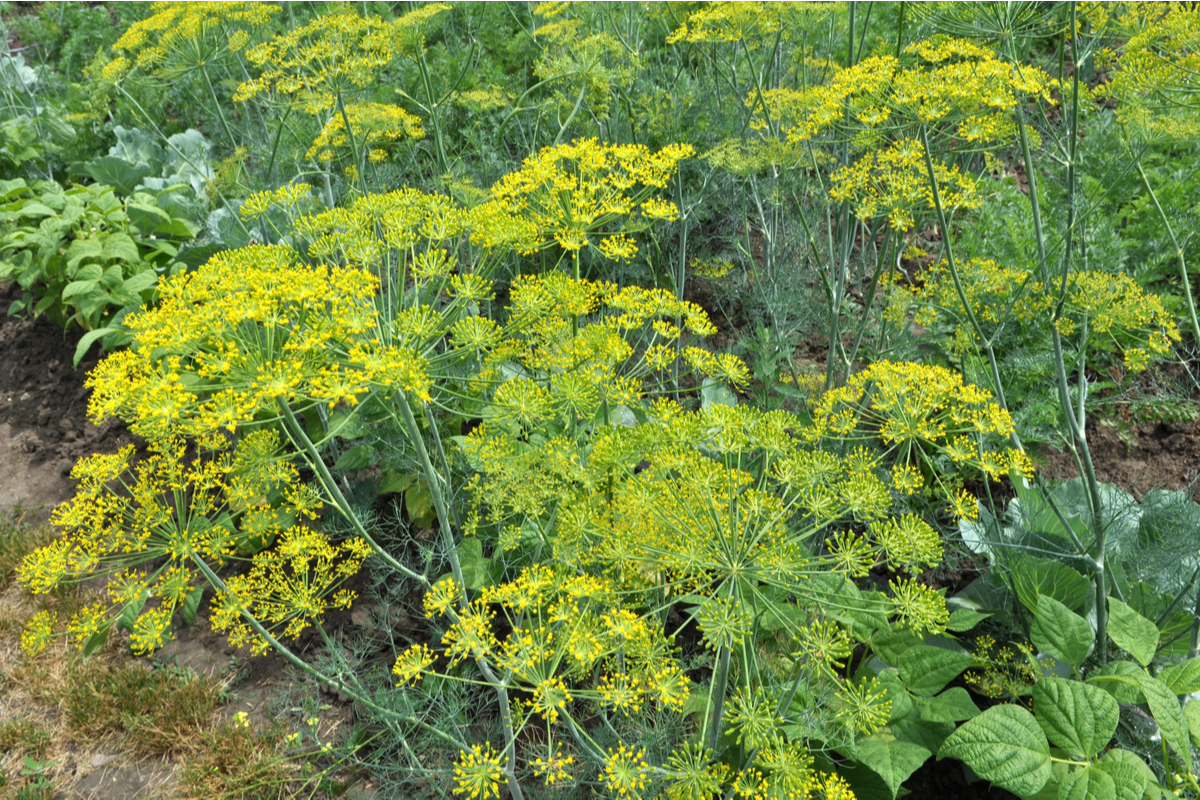
Dill (Anethum graveolens) is an annual herb with an unmistakable flavor and aroma.
The complex scent is a mash-up of other members of the Apiaceae family – a bit of anise, a dash of fennel, a hint of caraway, and just a touch of parsley. The unique taste of dill is earthy and slightly sweet.
As the sole species of the Anethum genus, which means “to soothe”, dill exudes its pleasing fragrance through its leaves, flowers, and seeds.
Why Grow Dill?
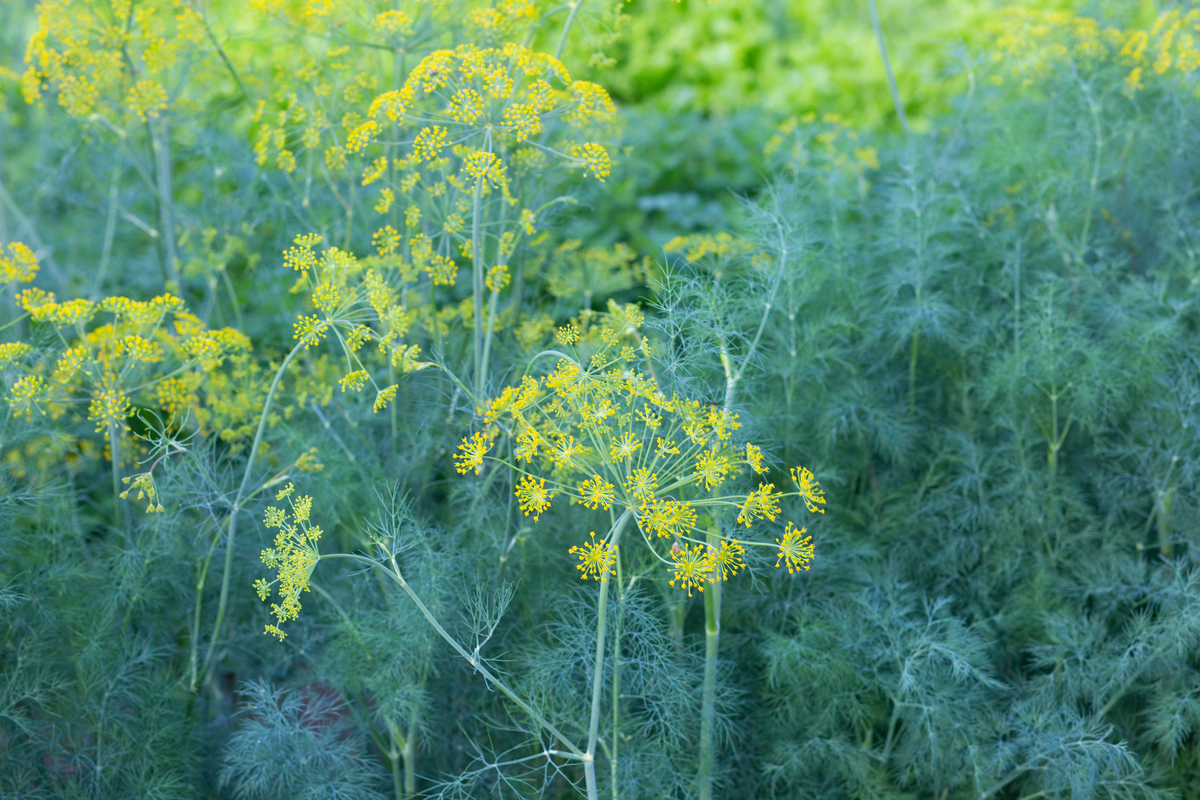
Aside from filling the air with its wonderful aroma, here are four more reasons to save a spot in the garden for dill:
Dill is a Showy Herb
Dill plants are incredibly attractive from spring all the way through to autumn.
The foliage of dill has a feathery and lacy look, with bluish-green leaves that are finely divided into thread-like segments.
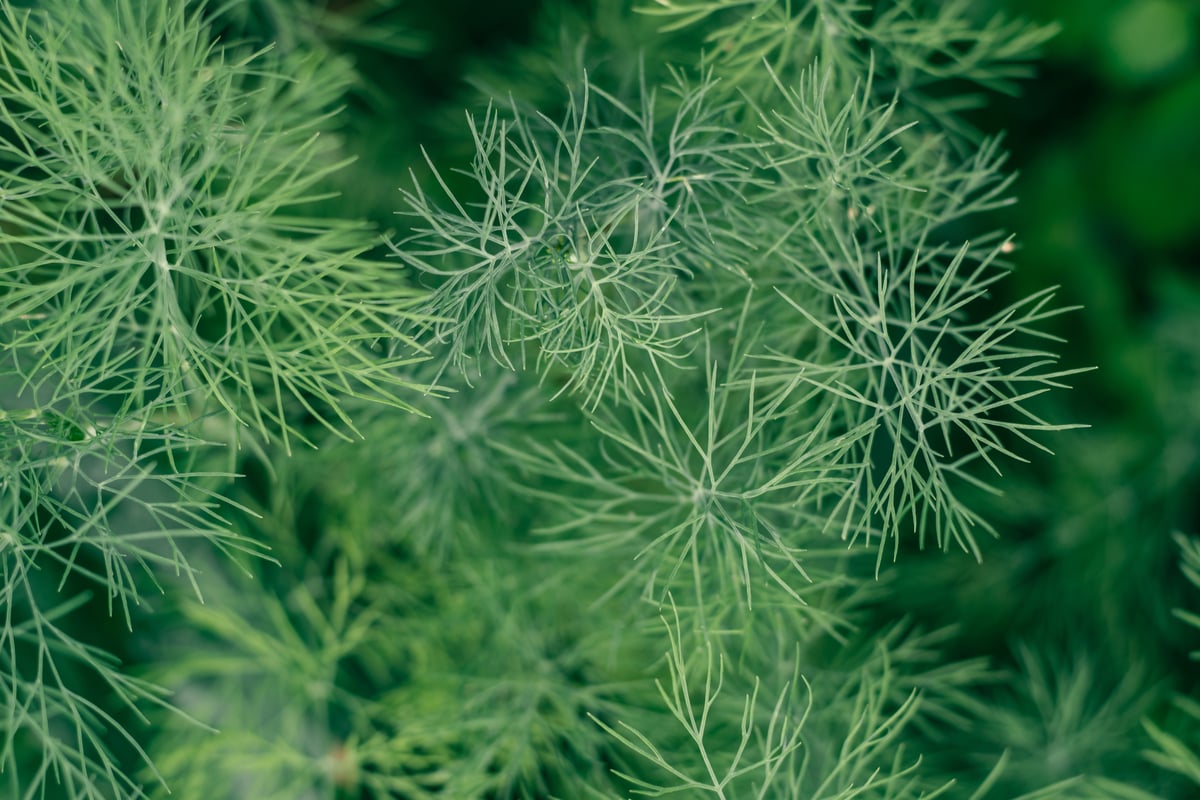
In midsummer the dill flowers will appear, arising on erect stems up to 5 feet tall. These consist of flat-topped compound umbels, each around 10 inches across, dotted with the teeniest yellow flowers.
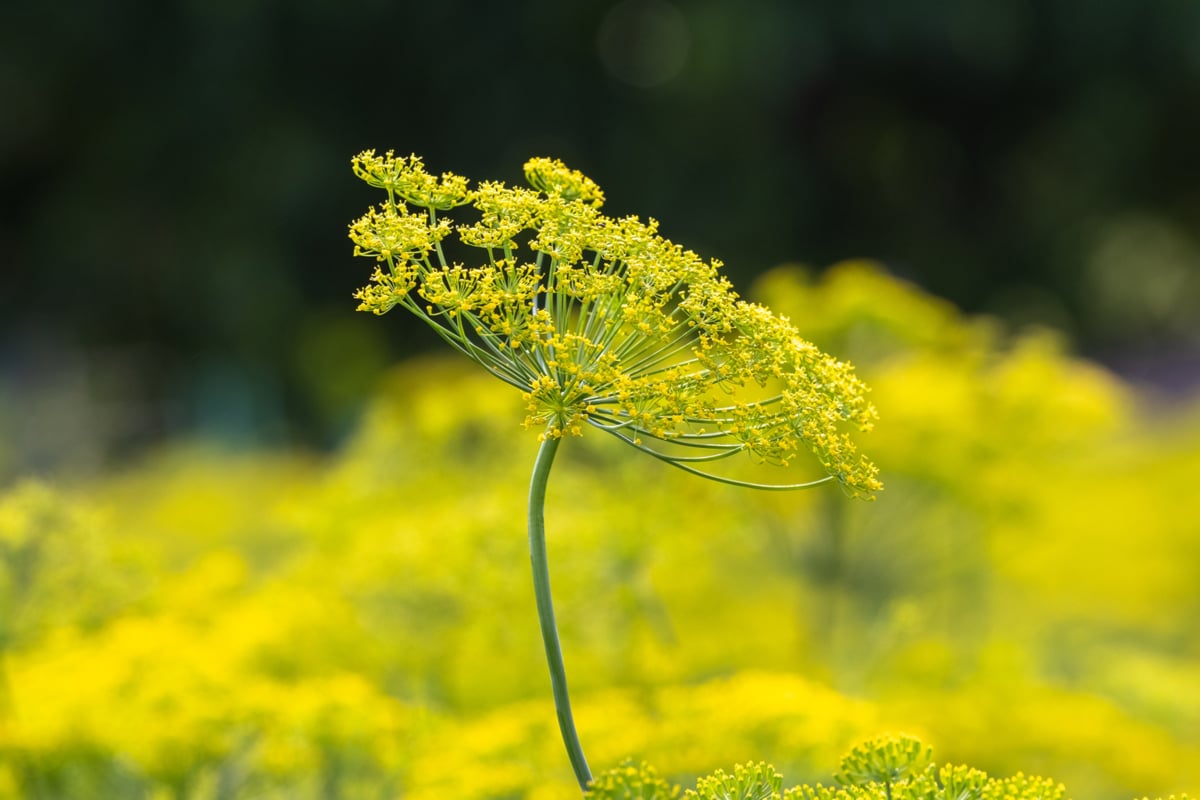
Dill’s blooms are especially fragrant. As cut flowers, dill is excellent in fresh or dried floral arrangements.
Leave dill blooms on the plant and the flowers will eventually become ornamental seed heads that provide interest in the fall and winter landscape.
Dill Flowers Support Beneficial Insects
Keeping the garden buzzing and fluttering with activity, a dill plant in flower will soon become a hot spot for the local insect community.
Bees, butterflies, wasps, lady beetles, hoverflies, lacewings, and tachinid flies will be irresistibly drawn to the color and scent of dill’s yellow umbels.
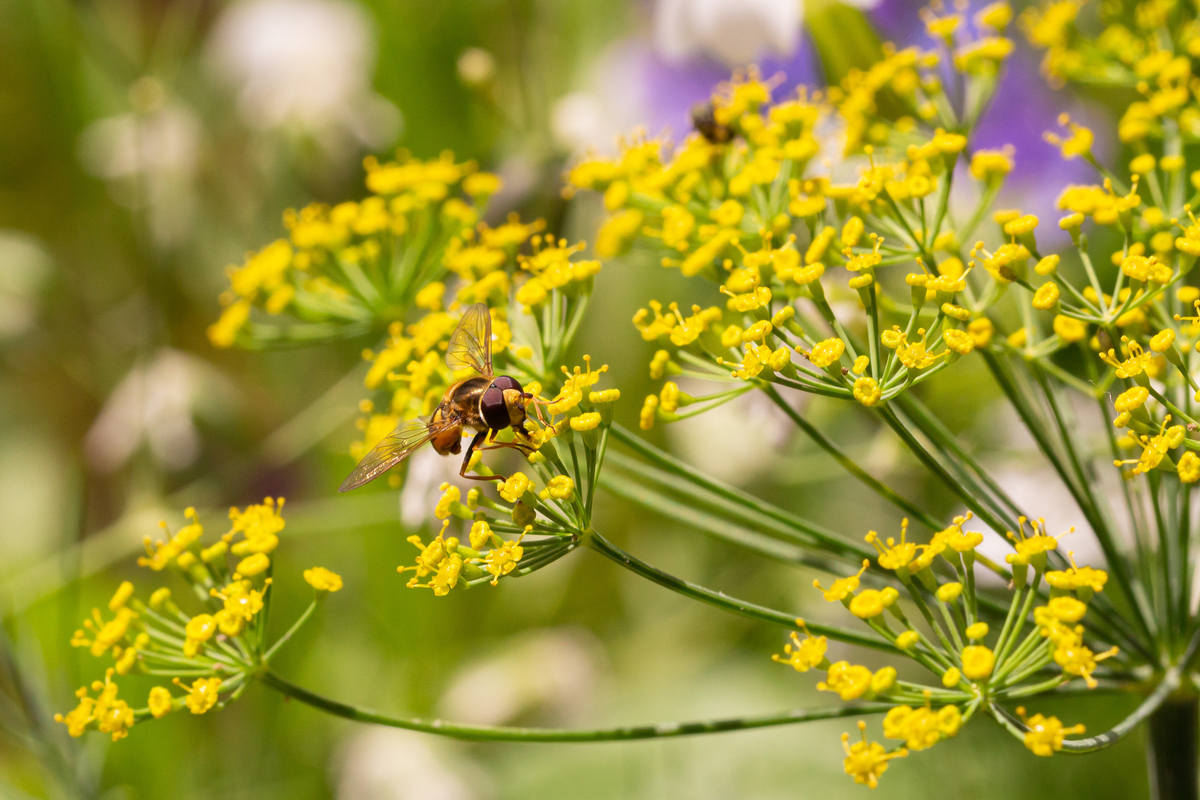
As they patrol the grounds, these beneficial insects will keep garden pests in check and pollinate a fair few flowers along the way.
Dill is a Companion to Many
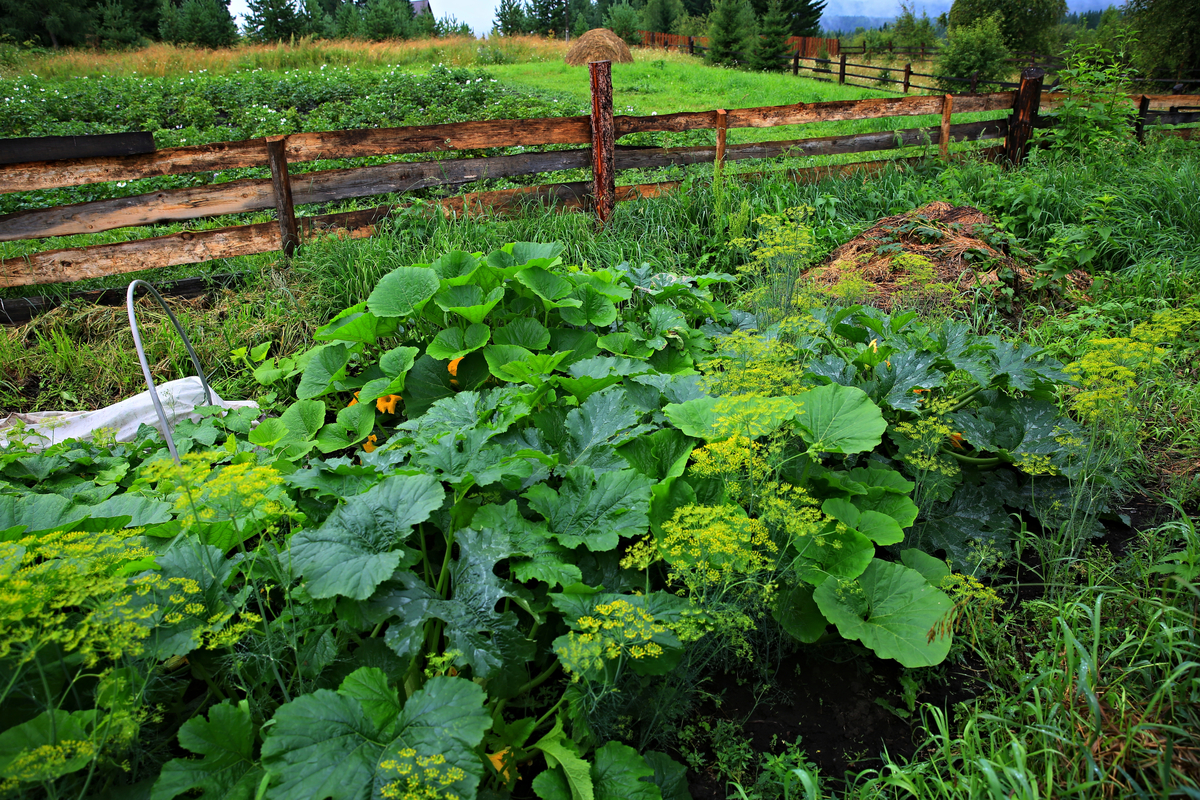
This aromatic herb is a friend to many in the vegetable patch.
Improving crop productivity, providing pest control, and creating a habitat for pollinators, dill can be interplanted with corn, lettuce, onion, asparagus, cucumber, eggplant, coriander, fennel, and Brassicas like broccoli and cabbage.
Only two plants need to be kept far away from dill: carrots and tomatoes, as they make for terrible companion planting neighbors.
Dill is Delectable
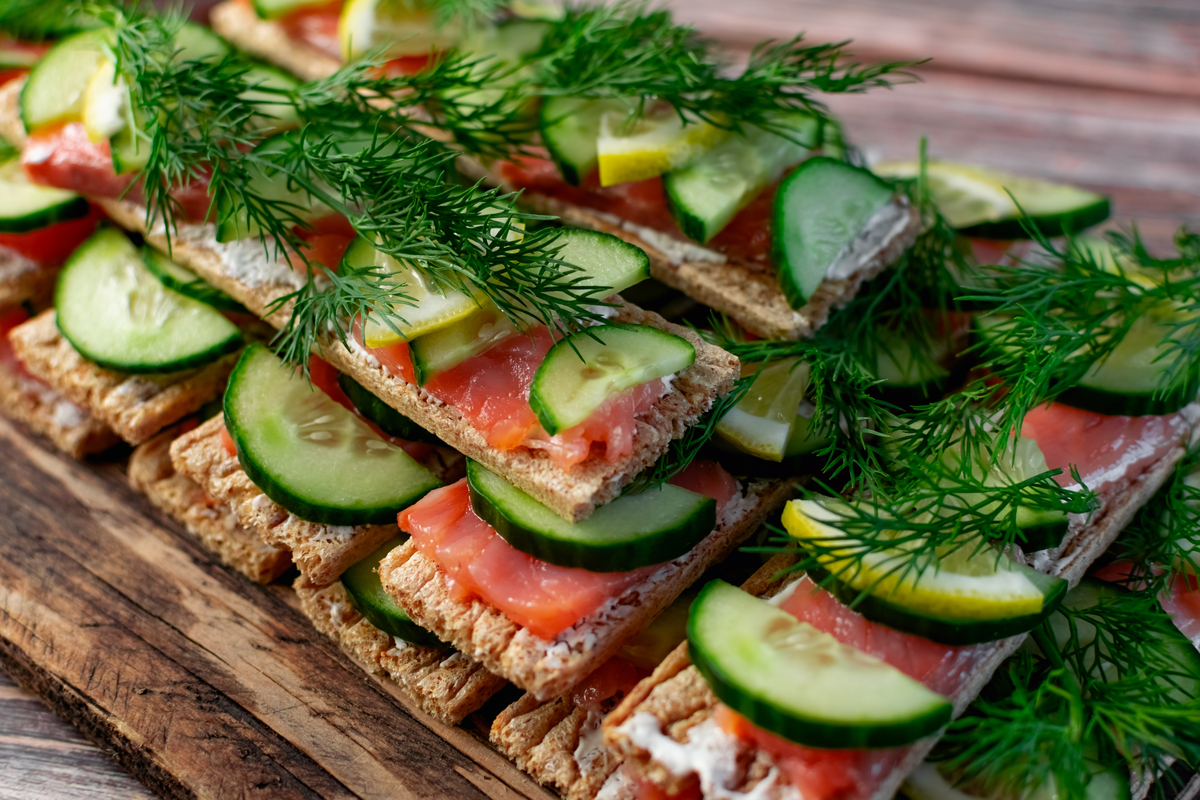
Dill has been used as a flavoring and seasoning for no less than 5000 years.
So there’s a lot you can do with dill.
Dill leaves, dill flowers and dill seed are all edible parts of the plant, with the seed having the strongest flavor of the three.
Use dill to elevate the flavor profile of fish, vegetables, soups, sauces, salads, bread, vinegar, butter, and teas.
And, of course, you can’t pickle your cucumbers without dill.
Dill Growing Conditions:
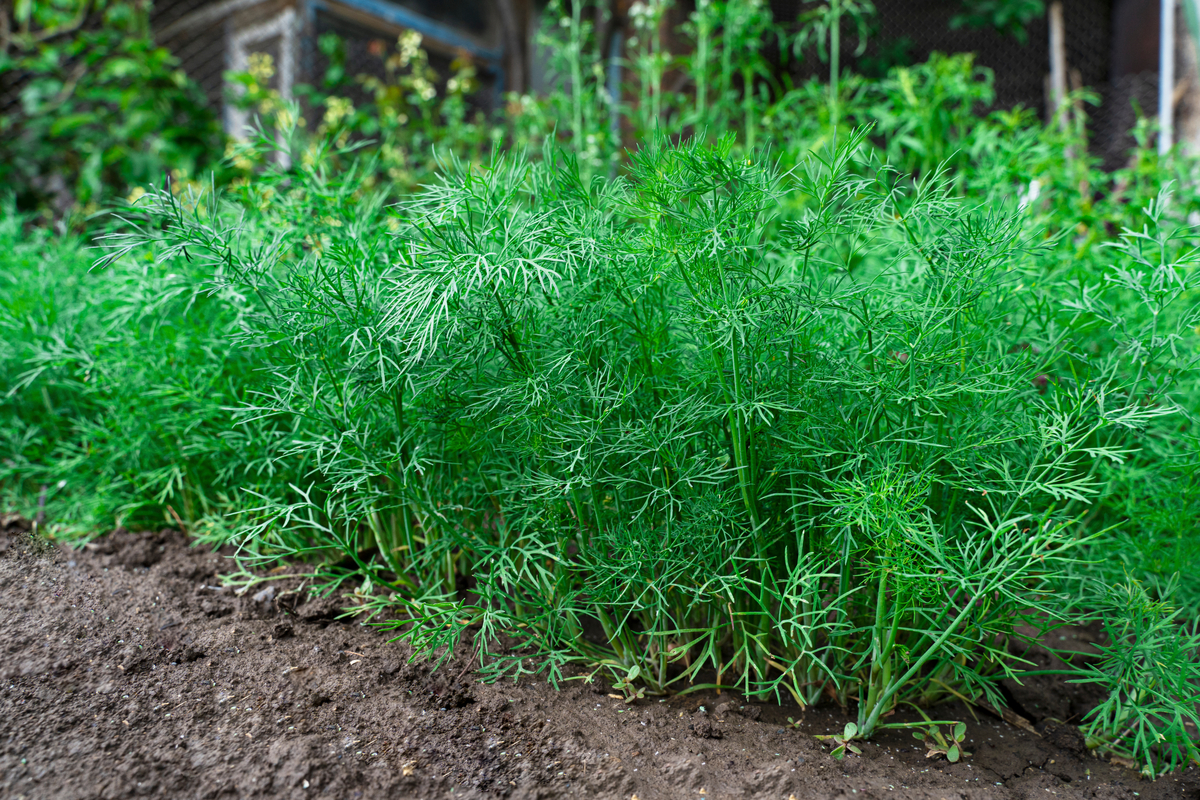
Dill is so easygoing that it has naturalized all over the world.
The herb has been cultivated by humans for so long, its origins are unknown. It’s believed to have first emerged in the cool summer climates of the Mediterranean and Asia Minor.
Hardiness
Grow dill in hardiness zones 2 to 11.
Dill is an annual herb that completes its lifecycle – from seed to flower to seed – in a single growing season. Allow the flowers to go to seed and you will have a permanent patch of dill in the garden. Otherwise, remove flower heads when they start to fade to limit dill’s generous self-seeding.
Light requirements
Plant dill in full sun. Pick a spot that receives at least six hours of light per day.
Soil
Dill prefers rich, but loose and light soils that drain well. Sandy or silty loam is the perfect soil for growing dill.
Watering
This herb appreciates consistent moisture. As long as the soil is well-draining, water dill plants freely throughout the season.
If dill’s soil is allowed to dry out completely, it will trigger early flowering.
Fertilizer
Like most other herbs, dill doesn’t require much by way of fertilization. Amending the plot with compost at planting time will keep dill happy the rest of the season.
Temperature
Dill is a cool-season plant that grows best in mild temperatures around 70°F (21°C). In hot summer temperatures, dill is prone to bolting.
Companion plants
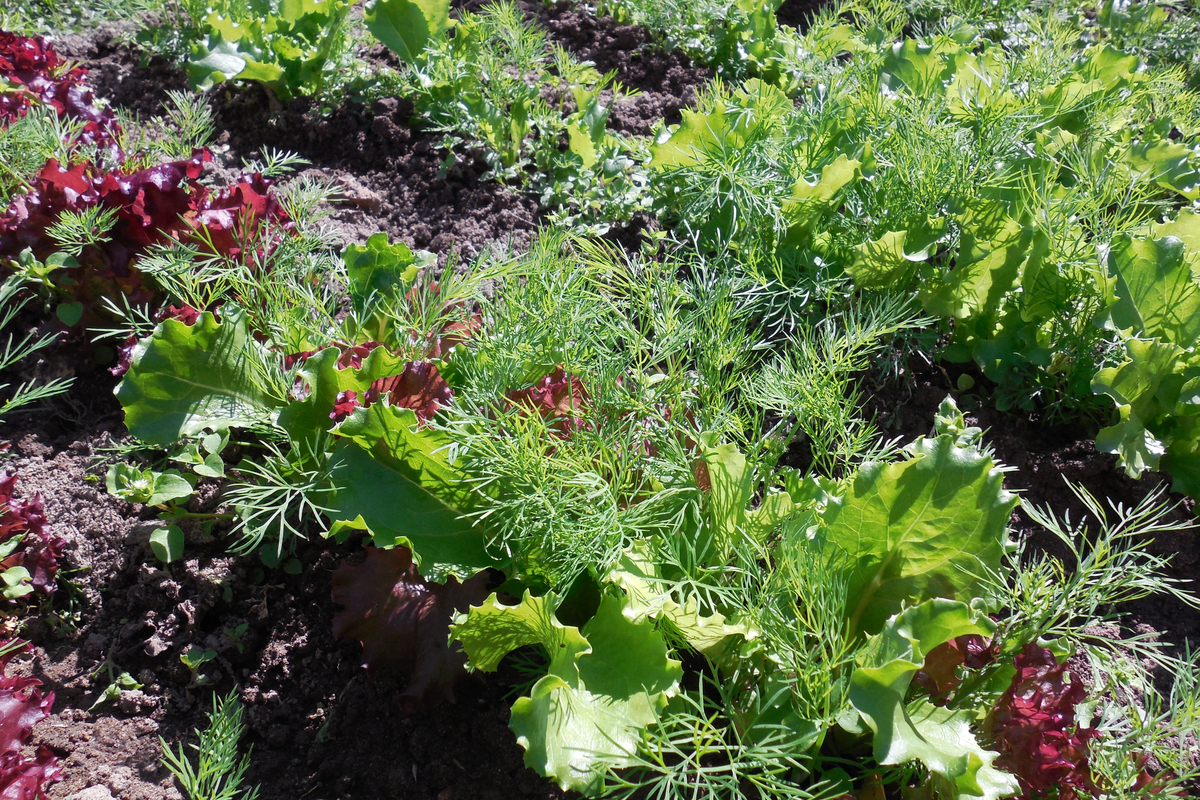
Grow dill alongside asparagus, eggplant, onion, corn, lettuce, cucumber, coriander, broccoli, and cabbage. Planting fennel and dill together will boost fennel seed production.
Dill should not share the same soil as carrots – although, young dill plants will help repel carrot fly. Try growing dill in deep containers and situating pots near your carrots.
Nightshades like tomato and pepper are also best kept away from your dill patch.
Plant supports
Dill has hollow stems which make these lanky plants more prone to flopping over.
Plant dill in a spot sheltered from strong winds. When growing tall varieties of dill, use cages or stakes to keep the plants standing upright.
Varieties of Dill
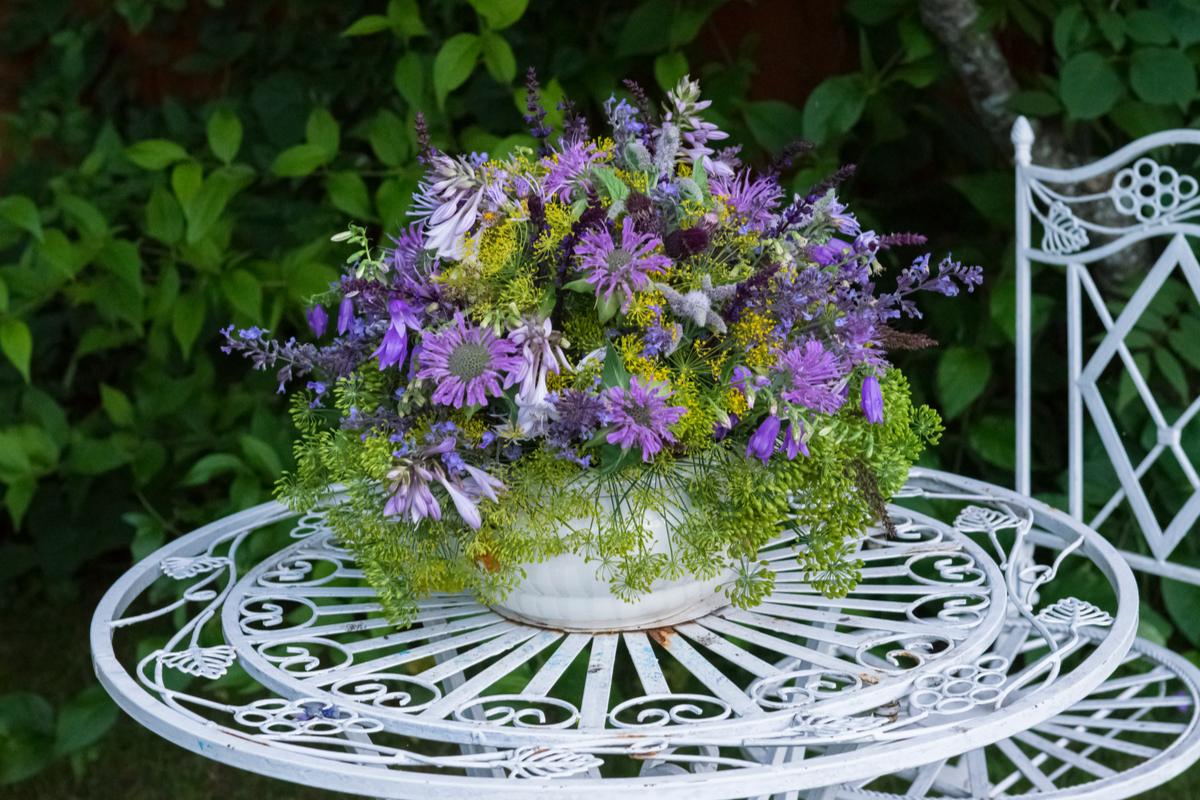
Stick with common garden dill, or choose a cultivar that best suits your needs and space:
Long Island Mammoth – True to its name, this variety of dill grows up to 6 feet tall. A fast-growing and vigorous plant, Long Island Mammoth will produce massive amounts of dill leaves and seeds.
Bouquet – More compact than standard dill, Bouquet grows to 3 feet high and is a great choice for smaller garden spaces. A fast-growing and early flowering variety, Bouquet dill produces attractive blooms that are superb as cut flowers and for use in pickling.
Fernleaf – Perfect for container gardens and small plots, Fernleaf dill is a dwarf variety that only reaches 18-inches in height. This one is also slower to bolt, giving you more time to harvest dill leaves.
How to Grow Dill from Seed
Sow dill seeds directly in the garden once all risk of frost has passed.
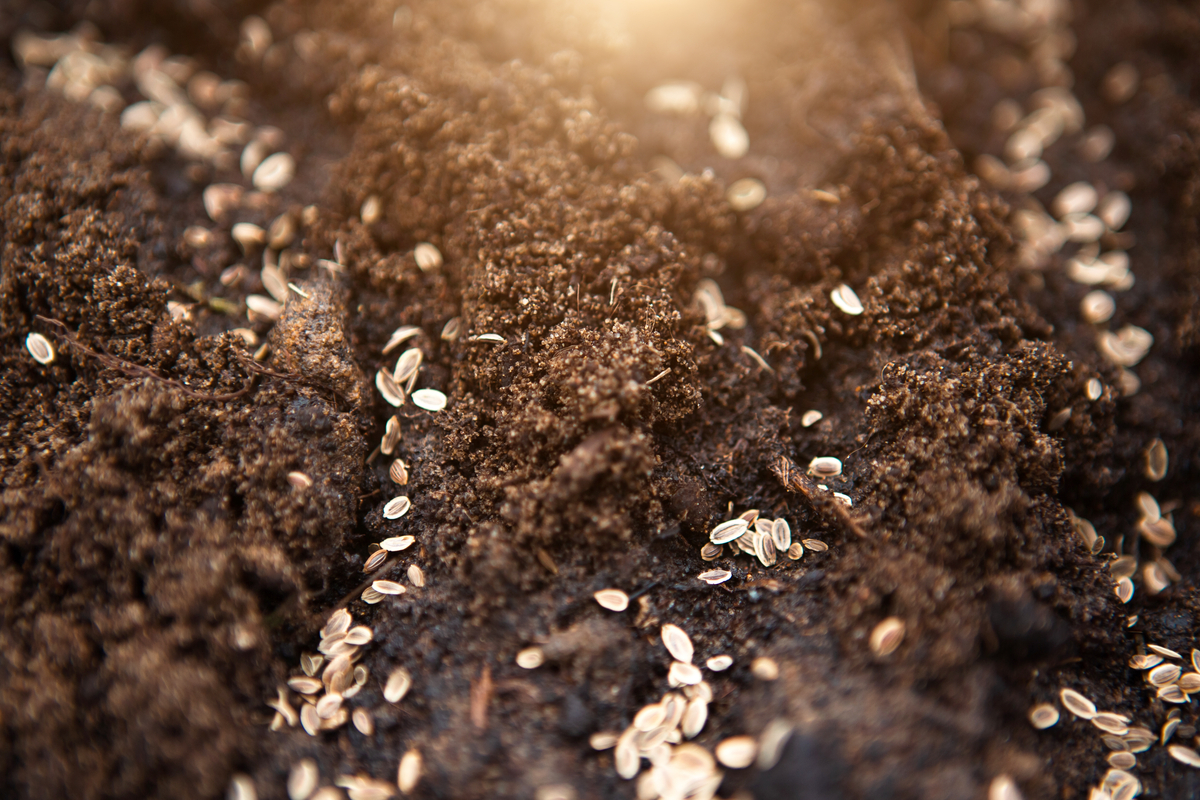
Like its close relatives, carrot and parsnip, dill produces a long taproot below the surface that doesn’t transplant well.
You can grow dill in a container garden provided you plant it in deep pots to accommodate its large root system.
- Plant dill seeds ¾ to 1 inch deep in rows 18 inches apart.
- Dill seeds will germinate in 7 to 21 days.
- When seedlings are 2 inches tall, thin plants so they are 12 inches apart.
- Keep the soil consistently moist.
For a bountiful harvest of dill, sow more seeds every two weeks until early summer, and then again in late summer for a fall harvest.
How to Harvest Dill
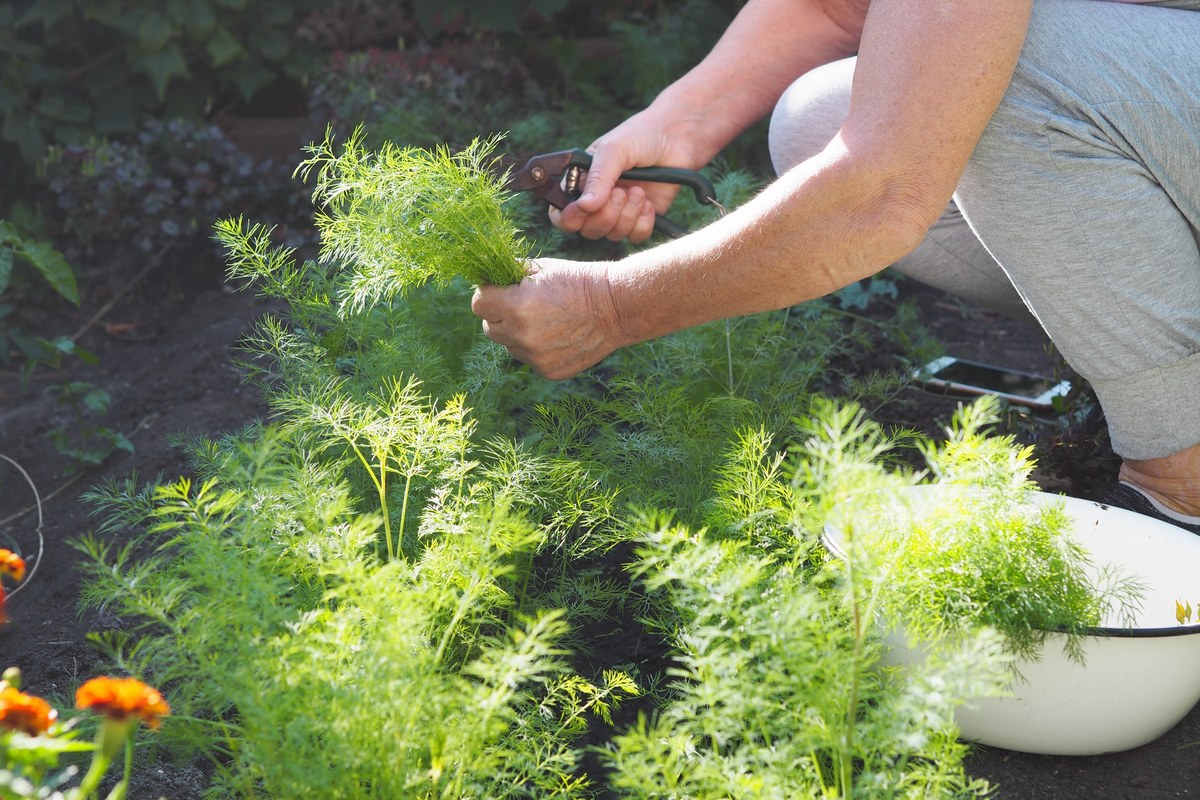
Dill Leaves:
You can begin harvesting dill leaves – also known as dill weed – once plants have at least five leaves.
Cut the oldest leaves from the stem. Younger sprigs won’t have the same amount of punch as the more mature growth.
When plants are more established, you can snip the entire length of the stalk a few inches from the soil line.
Dill leaves are most flavorful just before the plant flowers and lose flavor rapidly post-bloom. You can pinch off flower buds to extend the harvest time a bit.
Inevitably it will become too warm for dill and the plant will put all its energy toward flowering – but the harvest doesn’t stop there.
Dill Flowers:
Dill flowers are more pungent in flavor than dill leaves and can be used in any recipe that calls for fresh sprigs.
Harvest the umbels just as the yellow flowers are starting to open.
Prep the flower heads by immersing them in cold water. Agitate them gently to remove dirt, debris and any bugs. Lay the flowers in a single layer on a paper towel to dry.
You can use the blossoms whole or chop them up into finer pieces for soups, sauces, stews, and pickling.
Dill Seeds:
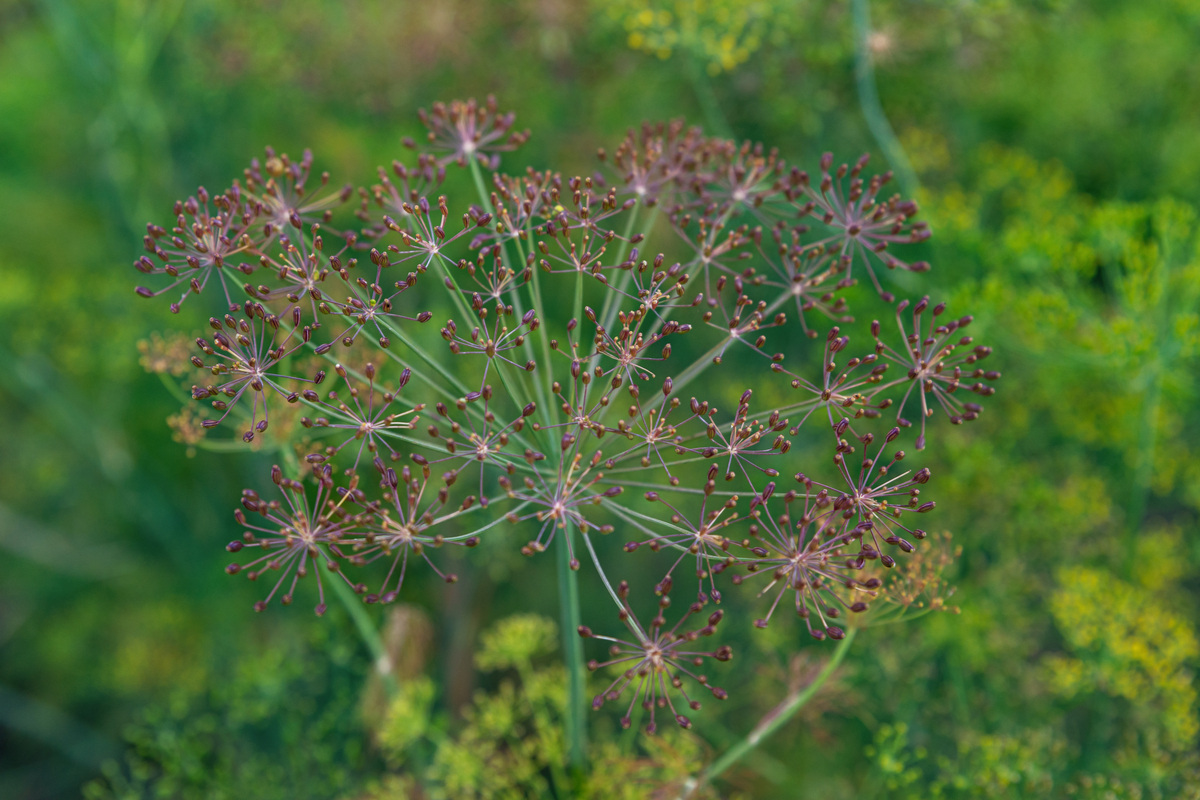
Allow some of your dill blooms to mature on the plant so you can collect dill seed.
You can remove the flower heads once seeds have begun to develop and have turned a tan color, about 2 to 3 weeks after plants have started to flower.
Hang the flower stalks upside down to dry in a dark, warm, and ventilated room. Tie paper bags over the seed heads, poking a few holes along the sides of each bag for airflow.
As the seeds ripen, they will pop off the flower head and drop to the bottom of the bag for easier collecting.
How to Store Dill
Dill leaves have, by far, the richest and most complex flavor when freshly picked from the plant. Toss them in your recipe right away to enjoy them at peak ripeness.
Soon after being harvested, dill will begin to wilt and lose flavor. You can keep dill weed fresh for up to one week by placing the sprigs in a glass of water.
For bigger harvests and longer hauls, freezing dill is the best method for retaining full flavor.
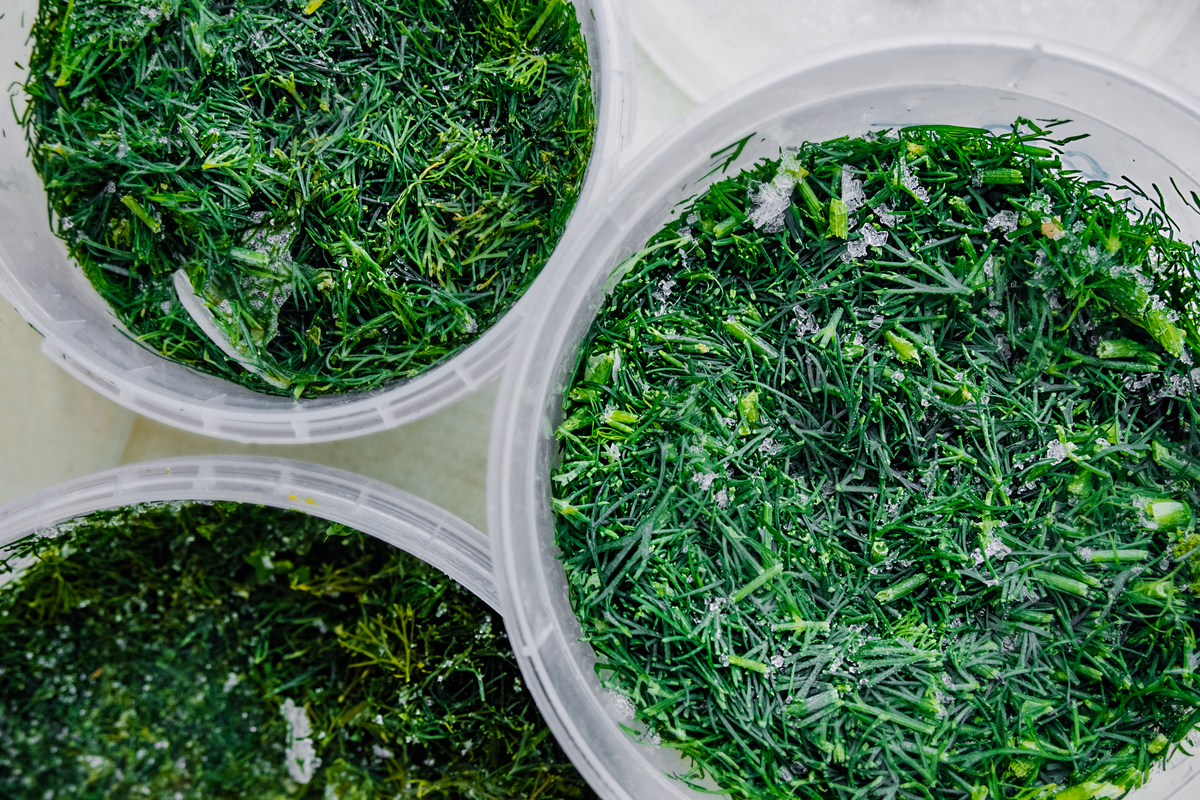
Rinse the dill leaves thoroughly and lay them out on paper towels to dry. When they are dry to the touch (but well before they are fully dehydrated), gather them into an airtight container and pop them in the freezer. The freezing method will work to preserve dill flowers as well.
Dill seed will keep its robust flavor for up to six months. Be sure to dry your dill seeds out completely before storing them in your spice rack. Use jars with tight-fitting lids and keep the containers out of direct sunlight.
Common Issues:
Dill plants suffer from very few pest problems or diseases – just keep an eye out for aphids and powdery mildew.
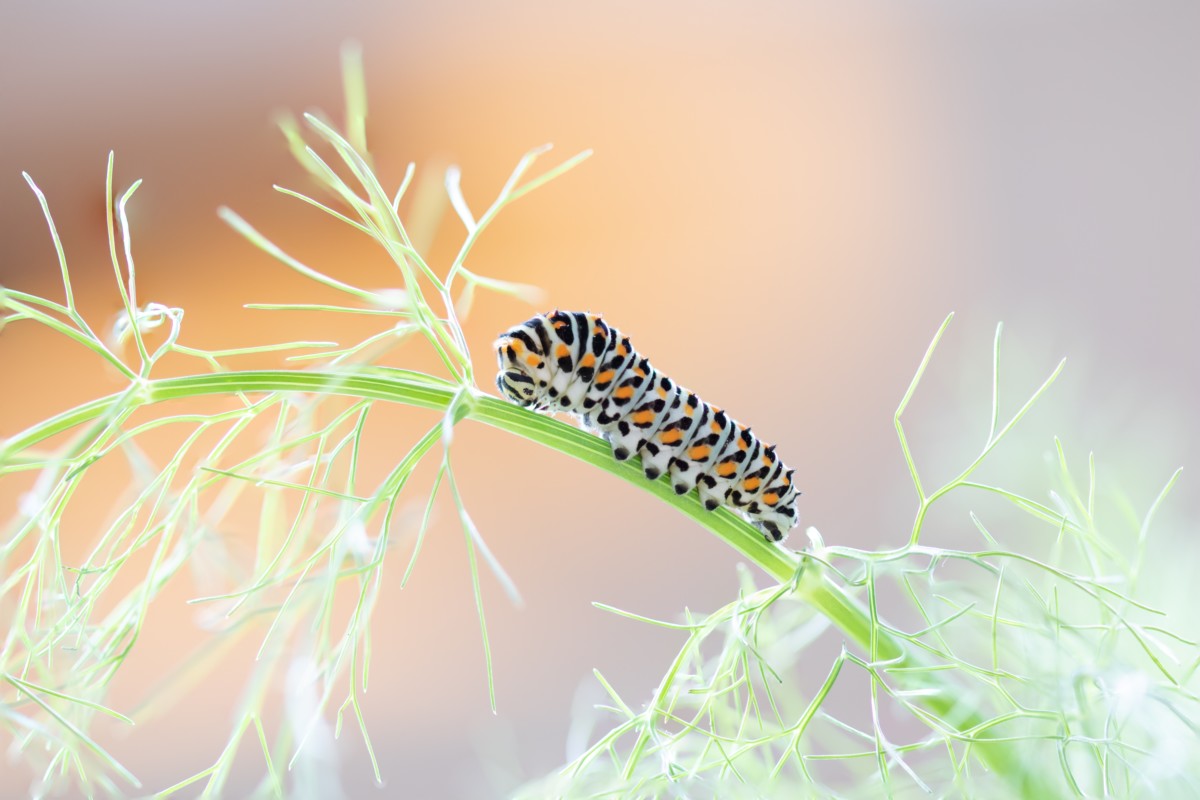
Dill is a larval host for the black swallowtail butterfly. You might see these vibrant black, green, and yellow caterpillars munching on the foliage. Though you can pick them off the plant, it’s a wonder to watch them transition to the cocoon stage and emerge as beautiful butterflies the following spring.

Get the famous Rural Sprout newsletter delivered to your inbox.
Join the 50,000+ gardeners who get timely gardening tutorials, tips and tasks delivered direct to their inbox.

